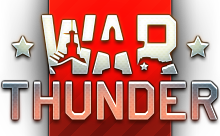Aircraft/Loadouts British Royal Navy FAA Corsair I and II
British Royal Navy Corsairs
46 members have voted
-
1. Would you like to see the FAA Corsair I and II in game?
-
Yes, in the main tech tree22
-
Yes, but only as a premium20
-
Yes, but only as a special event reward plane2
-
No, historical accuracy aside, the British FAA tech tree is fairly well fleshed out as it is.2
-

This topic is now closed to further replies.
Share
Followers
0
-
Recently Browsing 0 members
No registered users viewing this page.
